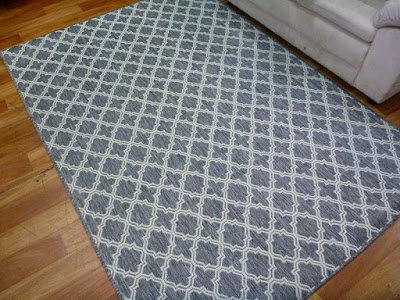What is the difference between jute rugs and sisal rugs?
- Sisal Rugs
Sisal Rugs are extracted from the leaves fibres of the Succulent plant named
Agave Sisalana. The central cultivation area of this plant is in the countries
like Brazil, China, Kenya, Cuba, Madagascar, Haiti, and Mexico. Earlier, it was
recognised native to Mexico only. However, now we can observe its successful
farming in various parts of the world. The plant of Sisal fibre is capable of
enduring vigorously hot climates accompanied by rare storms. So, we can believe
in the flexible nature of Agave. To make the Sisal rugs, its leaves are crushed
and cut to get stiff and healthy fibre – it is later spun and converted into
Sisal floor rugs.
- Jute Rugs
If you look for the original plant of
Jute, its origin is opposite to that of Sisal. Jute, also famous as Golden
Fibre, is derived from the Corchorus plant. It is a spindly, tall, and
flowering plant. Though it will also grow well in a warm climate, it requires
frequent rainfall and humidity. We can say that it produces better during
Monsoon. This plant is an inhabitant of the Indian subcontinent. Unlike the
Sisal rugs, Jute is taken from the central part of Corchorus stalks containing
lignin and cellulose. Once harvested, its bundles are soaked in the slow
running water for 10-30 days. Why? It gives the bacteria a chance of melting
the sticky material that keeps the fibres together. What is a Jute Rug? Well,
after all processing, the fibre is converted into jute yarn. This yarn will
turn into different items later, including rugs that are also famous as Jute
Rugs. So, have you seen the difference between their processing and origin? It
is actually where all distinctions between Sisal and Jute come.
Environmental Requirement: All
differences aside, we can see the plants of both Jute and Sisal are highly
sustainable and need a meagre amount of maintenance. They are also
eco-friendly.
Which one
should you choose between sisal rugs and jute rugs?
As we have discussed above, both the rugs
show some significant dissimilarities, so things go like this:
If you want to buy a rug for high-traffic
areas, Sisal is an option for you. It may include places like entrances, halls,
living rooms, and other similar sites. Moreover, as Jute cannot bear excessive
usage, you can put them in a bedroom or a dining hall. Any other corner of the
home that does not face heavy use can be the best option for a Jute rug. What
about having this Jute rug 8 x10 in your study room or personal library? It is
a navy blue colour with an Ivory pattern of diamonds, and the symmetrical line
gives such peaceful vibes. Let's consider it according to their feel. If you
plan to sit and spend a reasonable amount of time on the rug, go for Jute. The
coarse Sisal would make everything scratchy for you. Also, as we have already
said, don't let Sisal hurt sensitive crawling pets or babies. Buy them some
good Jute rugs. Would not it be fun to have the baby playing on a round jute
rug? Yes, you can put Sisal for your cat to use as a Scratching post.
Sisal carpets possess sound, flame
retardant, and anti-static properties. So, they can be a good option for the
kids' playroom. Or, would not it be an excellent option to put them in the
dining room, home studio or family room?
Now, if you like organic rugs, and budget is the only primary concern. The
jute rugs are lower in price than the other ones. Unfortunately, their
durability is also lower. So, if you can afford it, we hope investing some
reasonable amount in a Sisal rug would not be a wrong choice too. Otherwise,
Jute is already there to give well without disturbing your budget.
Rather than it, if you are looking for flatweave rugs, we can be a better
option for you.


Comments
Post a Comment